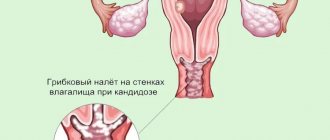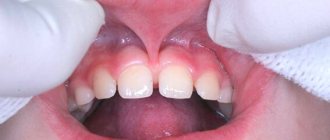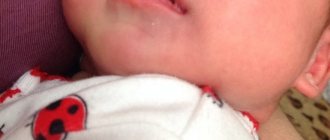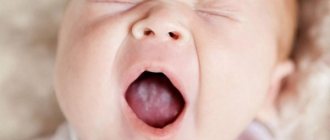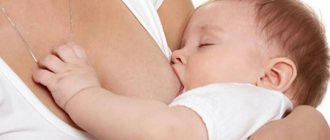Thrush is an inflammatory disease of the genitourinary system of a fungal nature. It most often occurs in women in the form of vaginal candidiasis. It manifests itself as cheesy or creamy white discharge from the vagina, burning, itching and redness in the genital area, pain during intimacy and during urination. Treatment includes local and systemic use of drugs with antimycotic effects, as well as correction of immunity.
Urogenital candidiasis is a common infectious disease. Thrush occurs mainly in women of reproductive age. In men who are sexual partners of such patients, candidiasis balanoposthitis may occur. A child becomes infected with a fungal infection from a sick mother during childbirth.
Causes
The disease is caused by microorganisms of the genus Candida.
They are part of the opportunistic microflora that constantly lives on the skin and mucous membranes of humans. However, with decreased immunity or hormonal imbalance, fungi begin to actively multiply, suppressing the growth of beneficial bacteria and causing an inflammatory response. The following factors can cause thrush:
- diseases of the endocrine system (diabetes mellitus, thyroid dysfunction);
- excess weight;
- diseases of the female reproductive system;
- disturbances in the state of the microflora of the mucous membrane of the external genital organs;
- taking antibiotics, hormonal drugs, drugs with cytostatic effects, immunosuppressants;
- radiation and chemotherapy;
- use of tight clothing, underwear made of synthetic fabrics;
- rare change of sanitary pads;
- intrauterine contraception - vaginal diaphragms, douching, spermicides;
- use of intimate deodorants, scented pads and tampons.
An exacerbation of the disease often occurs on the eve of menstruation and after significant stress. Diet is also important - consuming large amounts of carbohydrates contributes to the development of fungal infections.
Classification
Vaginal candidiasis occurs in acute or chronic form.
In the latter case, the symptoms are less pronounced, but the disease has a long course and is more difficult to treat. Chronic thrush can be recurrent, with frequent exacerbations, and persistent, when episodes of deterioration are rare and associated solely with the provoking factor. The formulation of the diagnosis also specifies whether urogenital candidiasis is complicated or uncomplicated, depending on the number of exacerbations of the disease over 12 months and the severity of its manifestations. The congenital form of thrush is observed in children infected during childbirth from a sick mother. Candidiasis of newborns most often affects certain areas - eyes, mouth, respiratory tract, lungs, skin, but fungal sepsis cannot be excluded when a large amount of the pathogen enters the blood.
How to distinguish thrush from the consequences of regurgitation
Some parents (especially if the child is the first-born) mistakenly mistake the plaque for the remains of curdled milk after the baby has burped. Indeed, it can be very difficult to visually determine the nature of the contents of the oral cavity.
To understand what exactly caused the symptom, you can do a small test. You need to moisten a piece of clean cloth with boiled water or chamomile decoction and try to remove the plaque.
If this is the remains of milk after regurgitation, then the baby’s mouth will be easily cleaned, and all the contents will end up on the tissue. If you have thrush, it is not so easy to remove plaque (after the procedure, irritated areas will remain at the site of inflammation).
Symptoms
The acute form of vaginal candidiasis has a clear clinical picture.
A woman is worried about intense itching, burning in the genital area and near the anus, pain when urinating, during intimacy, discharge from the genital tract of a white or yellowish color with a cheesy consistency and a sour odor. The latter can be abundant or adherent in moderate quantities on the mucous membrane of the vulva, in the posterior and lateral vaults of the vagina. Also in the affected area there is redness, swelling of the tissues, and possible cracks in the skin and mucous membranes. With persistent thrush, the symptoms are less pronounced. There may only be itching and discharge in small quantities, appearing, for example, only on the eve of menstruation. Recurrent vulvovaginal candidiasis may be accompanied by striking manifestations during exacerbations. They leave dryness, atrophy, and lichenification on the skin and mucous membranes.
In newborns, thrush is often accompanied by damage to the oral cavity and tongue. A white coating appears on the mucous membrane; when you try to remove it, areas of redness and swelling are found underneath it. A child suffering from candidiasis from birth is capricious, and has sleep and appetite disturbances.
Thrush in men manifests itself in the form of candidal balanoposthitis and urethritis. The disease is accompanied by burning and itching, redness, and swelling in the area of the head of the penis. It may cause rashes, often covered with a white coating, and cracks. Just like in women, sexual intercourse and the process of urination become painful.
Causes of thrush in a newborn
There is only one reason that can provoke candidal stomatitis in babies in the first months of life - weak functioning of the immune system as a result of the influence of unfavorable factors.
Conventionally, unfavorable factors can be divided into two groups: internal, associated with the functioning of the body and the functioning of organs, and external.
Internal factors:
- deep prematurity (birth a month or more before the due date);
- low birth weight (less than 2500 g; and less than 1700 g for a child born during a multiple pregnancy);
- congenital defects and pathologies of the formation of internal organs;
- insufficient supply of nutrients and vitamins (occurs when the mother’s diet is poor, if the child is on breastfeeding);
- anemia (low hemoglobin levels as a result of iron deficiency);
- intestinal dysbiosis;
- disturbances in the functioning of the endocrine system;
- rickets;
- history of infectious diseases.
External factors:
- Injury to the oral cavity . Abrasions and cracks in the oral mucosa are an excellent environment for fungi to settle and actively reproduce.
- Antibiotic therapy . It often happens that in the first days of a child’s life it is necessary to give him strong antibiotics (for example, when a child is born with pneumonia and is placed in the intensive care unit immediately after birth). Antibiotics of various groups have a detrimental effect not only on pathogenic bacteria, but also on beneficial microflora, destroying and destroying them. As a result, the newborn develops dysbiosis.
- Refusal of breastfeeding and transfer of the baby to artificial formula . Even the most expensive milk substitutes contain a lot of sugar, which is added to maximize the taste of the product. The acidity of the oral cavity increases and creates a breeding ground for fungal growth.
- Candidiasis in the mother in the last stages of pregnancy . If a woman does not have time to cure thrush before giving birth, the likelihood of infection of the child during passage through the birth canal becomes very high.
- Insufficient hygiene of the newborn. This includes any factors that can provoke the colonization of mucous membranes by harmful organisms: dirty rattles, unboiled nipples and bottles, poor skin care for the baby, etc.
Diagnostics
A gynecologist diagnoses and treats thrush in women. If candidal balanoposthitis appears, you should seek help from an andrologist. During the patient’s initial visit, the doctor clarifies the nature of the complaints, the duration and frequency of appearance of signs of thrush, and conducts an external examination of the genital organs. Next, the patient is prescribed laboratory tests:
- a smear from the mucous membrane of the genital organs followed by a microscopic examination of the biomaterial;
- cultural seeding to determine the species of the fungus and its sensitivity to antimycotic drugs;
- detection of pathogen gene material by PCR.
In order to clarify the predisposing factors that contribute to decreased immunity and hormonal disorders, the following is carried out:
- clinical blood test;
- determination of antibodies to HIV;
- blood test for the content of important microelements and vitamins;
- analysis of blood glucose and carbohydrate metabolism metabolites.
For the purpose of differential diagnosis, it is possible to conduct other tests, and if necessary, consultations with other specialists are prescribed - a therapist, gastroenterologist, dentist, immunologist, endocrinologist, infectious disease specialist.
How to determine if a newborn has candidiasis
This will not be difficult, since the hallmark of thrush in the mouth is the appearance of a white coating that can cover the tongue, gums, inner surface of the cheeks, palate, tonsils, and tonsils.
Thrush spreads to the back of the pharynx in the absence of the necessary therapeutic measures. In very rare cases, the fungus can affect the baby's esophagus and even intestines.
A specific coating, similar to semolina grains (in advanced cases, it can resemble particles of cottage cheese) is the primary sign of thrush.
There are also secondary symptoms that usually appear simultaneously with the main symptom of the disease:
- poor appetite (refusal to breastfeed or bottle);
- crying during feeding;
- sleep disturbance at night;
- general malaise;
- moodiness and irritability;
- redness of the mucous membranes of the oral cavity, wounds and ulcers;
- an increase in temperature to 37-38 degrees (in cases where a bacterial infection is associated with a fungal infection).
The appearance of such symptoms is a reason to call your local pediatrician or consult with a pediatrician online.
Treatment
Since fungi of the genus Candida belong to the opportunistic flora, treatment is required only in cases of vaginal candidiasis or balanoposthitis proven in laboratory studies, which have characteristic symptoms.
In case of uncomplicated course of the disease and early contact with a gynecologist, it is possible to prescribe only topical medications - vaginal suppositories and tablets for thrush, antifungal ointments, creams. In case of their ineffectiveness, as well as in case of chronic urogenital candidiasis, systemic antimycotics are prescribed - fluconazole, itraconazole, ketoconazole.
Drug therapy for thrush during pregnancy is limited to topical antimycotic drugs for intravaginal administration. Children are prescribed systemic antifungal agents for thrush in a dosage adjusted based on body weight.
Local and general drugs are also used to treat balanoposthitis. To achieve greater effect from the use of ointments and creams, the head of the penis is first washed with a weak soda solution. If a man has a regular sexual partner, she also needs to undergo an examination by a gynecologist and, if necessary, a course of antifungal therapy, since infection with thrush is possible during intimate intimacy.
Prevention
Prevention of thrush consists of maintaining immunity, eliminating factors that provoke its decline or hormonal imbalance.
It is important to use antibiotics reasonably and only as prescribed by a doctor, and after completing the course of treatment with such drugs, restore the microflora with pro- and prebiotics. The following measures will also help to avoid the development of fungal infections:
- maintaining personal hygiene;
- timely treatment of endocrine and urogenital pathologies;
- normalization of weight and nutrition;
- use of barrier contraceptives;
- having a permanent sexual partner;
- wearing underwear made from natural fabrics;
- refusal of scented personal hygiene products, intimate deodorants, and douches.
Prevention of thrush in newborns
To prevent thrush from returning, as well as for preventive purposes, you should follow simple rules:
- boil bottles, nipples and pacifiers if the child eats formula after each feeding;
- cleanse your baby’s skin daily using hygiene procedures;
- wash your hands before playing or interacting with the child, before feeding;
- pay enough attention to mother’s breast hygiene if the newborn receives mother’s milk as food;
- after feeding, clean the mouth with water or special products sold in pharmacies or children's stores (foam, solutions, etc.);
- strengthen the child’s immunity (long-term breastfeeding, hardening procedures, daily walks, massage, etc.);
- Toys should be washed at least once a week;
- monitor the condition of the baby’s intestines.
Thrush is an unpleasant phenomenon, but it is quite treatable, provided that therapy is started on time and carried out after consulting a doctor. Complications after suffering from candidiasis almost never occur, so preventive measures and close attention to the hygiene and well-being of the baby are quite enough to avoid relapses and re-infection.
To learn how thrush manifests itself in infants and how to get rid of it, watch the video:
This article has been verified by a current qualified physician, Victoria Druzhikina, and can be considered a reliable source of information for site users.
Bibliography
1. https://www.antibiotic.ru/cmac/pdf/6_2_168.pdf
Rate how useful this article was
4.4 7 people voted, average rating 4.4
Did you like the article? Save it to your wall so you don’t lose it!
